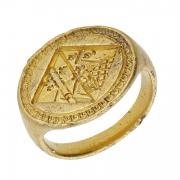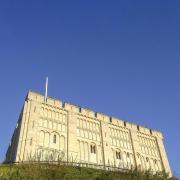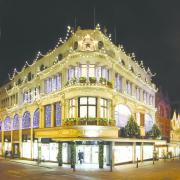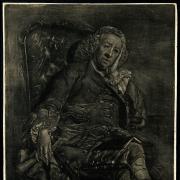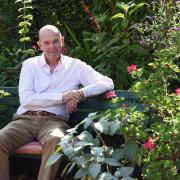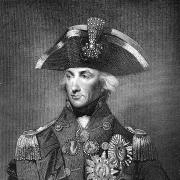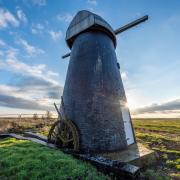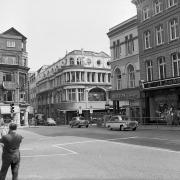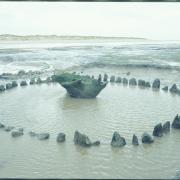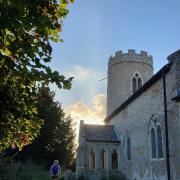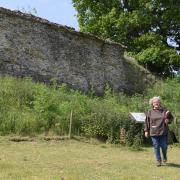John Wright tells the story of a true Norfolk great - Margaret Fountaine, adventurer, lover and butterfly collector
In 1940, a passer-by in the West Indies found a 78-year-old woman dying by a road next to a butterfly net. It was Margaret Fountaine, one of the most remarkable women in Norfolk’s history.
Had she died far from home? Or was this where she was happiest, in yet another of many corners of the world, where she had wandered for 50 years?
With her death came a mystery, which I first explored in about 2003. Her stunning collection of 22,000 butterflies was bequeathed to the Castle Museum in Norwich, where it still resides.

With it “there was a tin trunk. Its lock had a message on it from Margaret saying that it wasn’t to be opened until 1978,” museum curator at the time, Dr Tony Irwin (since retired but still at the museum as a research associate), told me. Faithful to her request, Tony even remembers the very day the trunk was opened because he was there. Inside it were her diaries.
Written in very clear handwriting, they were bound into 12 volumes and contained more than a million words. A separate page said: "To the Reader, maybe yet unborn, I leave this record of the wild and fearless life of one of the ‘South Acre children’.”
1978 was 100 years since her diaries began, but why keep it a secret so long? We can only guess. But when you read extracts of it, published in a book by Times Newspapers, called Love among the Butterflies, edited by Bill Cater, you start to suspect why.

“From my earliest childhood,” she wrote, “my home life has been associated with ‘rows’; there were ‘rows’ with my poor old father, ‘rows’ with the servants, and all of us as children, in fact with anyone who has ever come into contact with my mother for the last 74 years.”
She refers to “the greatest passion of my life,” but what was it? The butterflies? Her freedom? Or the man she eventually met, Khalil Neimy, whom Cater, for some reason refers to as Charles, and after whom she named the collection.
Margaret was one of eight children; but whatever their parents’ relationship, only one of the six sisters ended up marrying. She was born in 1862, the daughter of Rev John Fountaine, rector of South Acre, a hamlet 20 miles from Norwich.

Margaret’s diary goes in at the deep end, describing a crush she has on a local vicar she never meets and, at 20, her ‘fight’ over him with her 17-year-old sister. "Evelyn has always rather a weakness for running after curates,” but “I knew I loved Mr Swindell far more than Evelyn.”
The next year Margaret falls for Septimus Hewson, an Irish chorister at Norwich Cathedral. But a passionate letter to him gets only a polite reply. He then disappears, leaving debts behind. Inheriting some money, Margaret follows him to Dublin and tells him so in a letter. He can’t get round fast enough. They start going out together, but he loses interest.

Margaret Fountaine’s wanderings begin with a vengeance. She meets the infamous Corsican bandit, Jacques Bellacoscia, whose resumé includes shooting the mayor of Ajaccio. "I drank with Jacques…that wild mountain scene, the outlaw and his clan, the savage dogs,” says Margaret, “a sharp contrast to the dull peace of an English home.”
She writes to an Italian doctor she falls for in 1894, when she catches a chill in the mountains. “Bruno replied with a prescription which cured her cough,” Cater wrote. Margaret seemed to hate the prospect of getting trapped in a strict Victorian world, saying: “The love of a true, good man is forever denied to me.”
She turns down Mr Lockie after a whist game, saying “I marred my own fate,” calling marriage “an unbearable tie. She resigns herself to “going to the very edge of the precipice with bad men, but without falling over it!”

Funnily enough, Love among the Butterflies is nearly all like this; more like a torrid Barbara Cartland adventure story than anything. Her need for the right man to come along seems as powerful as her relentless search for rare butterflies. By now she’s rambled around Switzerland and Italy, and in 1900 spends Christmas in France with her sister Rachel.
She wrote: “I have the longing which all women must sometimes have to feel strong arms around me” but she flees with her sister Rachel from a Christmas banquet in a French hotel that Christmas when they spot the mistletoe, saying: “Neither of us has any desire or intention of being embraced by a lot of tipsy diseased Frenchmen.”
Margaret was 39 in 1901 when Khalil Neimy, 24, working as a waiter in a Syrian hotel which he said his brothers owned (A chat-up line?), walked into her life. Her initial reaction: “He suddenly leant forward and kissed me on the arm through the sleeve of my silk blouse. Never had I come into contact with quite such a weak, contemptible character before.”
He was in for a rough ride. Margaret was quick to tell him how she didn’t want to be tied down, and Khalil seemed just as quick to reassure her that he’d be happy to spend his life looking for butterflies too. Margaret's mother makes yet another attempt to match-make her with someone ‘more suitable’.

Back in England she tells her how poor the family had become, but Margaret tires of being cooped up with “a person who talks of little else but death and funerals. "Hearing the call of the wild, not to mention Khalil, she’s off again. Although seeming happy together, Margaret also finds herself engaged to an Englishman, Edwin Gilbertson.
Describing a train trip in Spain, Margaret says: “Khalil chose to behave himself in a way Edwin would highly disapprove of whenever the train entered a tunnel, which was pretty frequently. "She writes to Edwin, calling off the engagement, and receives a 2,000-word reply saying he was “thunderstruck!!”
Outraged that retracting the public announcement would damage his reputation, he says: "I am duty bound to consider our engagement still in force,” and threatens to sue her. Margaret went for Edwin in her reply, reminding him that, since she happened to like novel experiences, she would be more than happy to show him up in court. She never heard from him again.

Next, Margaret was in India; but Khalil couldn’t join her. War had broken out between Turkey and the Balkan states, and his mother and sister were sick. Margaret now panicked. Four months went by with no word from Khalil; but one day he turned up on a ship. They were inseparable after all. They visited England together, and Khalil was often assumed to be a fellow naturalist, which he’d become anyway.
Whenever it was time to build up the butterfly collection in faraway countries, off they’d go. And so, things went on. Even when she was 74, the parson’s daughter would ride “a fair part of 45 miles a day at a gallop,” Cater wrote. By the end of her life, she’d seen every corner of the world, been “lost in the African jungle alone, leapt uninjured off a crashing train, lay helpless with malaria watched by tribesmen, flew in planes, experienced an earthquake in Cuba, and shocked Virginians by playing pool in the local saloon.”
Part of the butterfly collection is in the Natural History Gallery at the Castle Museum, and the public is free to look at them. Seeing the name “Neimy” in the title of the collection is our reminder of what Margaret was really looking for on all those hills.

There is a permanent public display of the Fountaine-Neimy collection of butterflies at the Norwich Castle Museum and Art Gallery.





